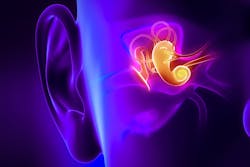Shortwave-infrared device could improve ear infection diagnosis
Researchers at the Massachusetts Institute of Technology (MIT; Cambridge, MA) and a physician at Connecticut Children’s Medical Center (Hartford, CT) have developed a device that could improve accuracy of ear infection diagnosis. The device, which aims to resemble and work like existing otoscopes, uses shortwave-infrared (SWIR) light, which can penetrate much deeper than conventional otoscopes that use visible light and can only see a few millimeters into the tissues of the ear.
Related: Handheld optical devices for the physician's toolbox
The device could drastically reduce the amount of ear infections that are incorrectly diagnosed and prescribed unnecessary antibiotics. Such overprescriptions are considered a major cause of antibiotic resistance.
The one clear diagnostic sign of an infection in the ear is a buildup of fluid behind the eardrum, explains Jessica Carr, an MIT doctoral student who is an author of the paper describing the work. But the view through a conventional otoscope cannot penetrate deeply enough into the tissues to reveal such buildups. More expensive specialized equipment can offer more information needed for a firm diagnosis, but these tools are usually only available in the offices of specialists, who are not consulted in the vast majority of cases.
"A lot of times, it's a 50/50 guess as to whether there is fluid there," Carr says. "If there's no fluid, there's no chance of an infection. One of the limitations of the existing technology is that you can't see through the eardrum, so you can't easily see the fluid. But the eardrum basically becomes transparent to our device." Fluid within the ear, by contrast, "becomes very dark and very apparent," she adds.
While there are more advanced systems under development that do provide data on these deeper parts of the ear, Carr says that they haven't been widely adopted because they are unfamiliar to physicians, and some of these devices require a trained audiologist to run them. So the MIT team worked to make the new device as familiar as possible, closely resembling the otoscopes that doctors already use.
After initial successful tests on 10 adult subjects, the team is now in the process of carrying out tests on pediatric patients to confirm the accuracy of the diagnostic results. Assuming the tests go well, the team hopes to commercialize the device. The ultimate cost, Carr says, will depend on the cost of the SWIR imaging system. The cost of those devices, originally developed for military uses, has already fallen drastically over the last couple of years, she says, and widespread production could drop those costs rapidly.
Full details of the work appear in the Proceedings of the National Academy of Sciences (PNAS); for more information, please visit http://dx.doi.org/10.1073/pnas.1610529113.
